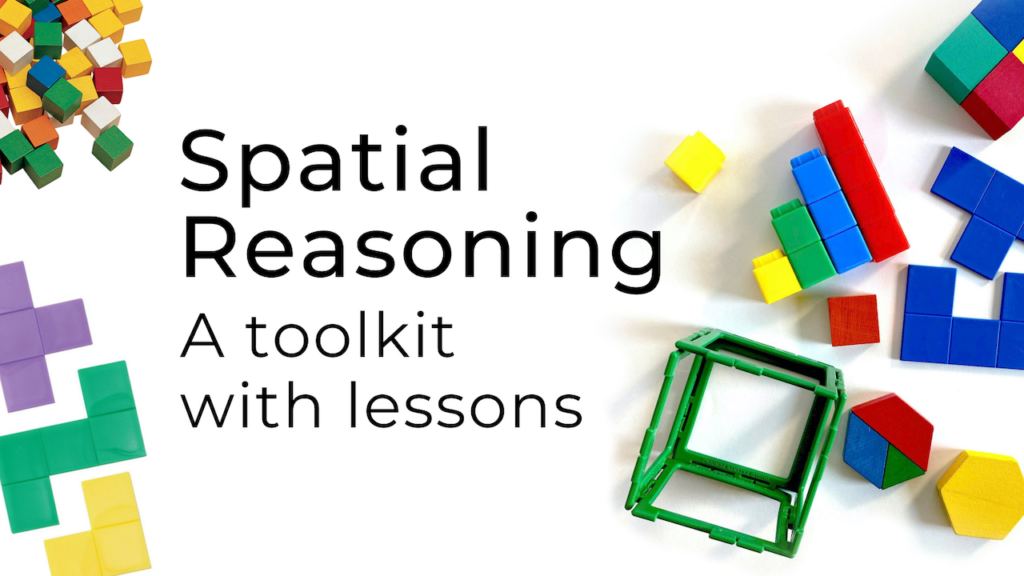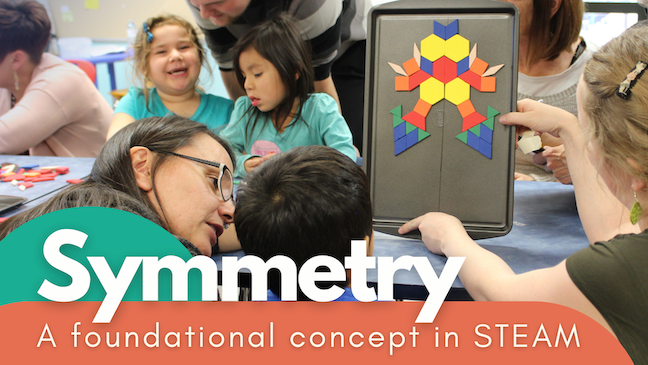Radial Symmetry and Print Making
Junior (Age 9 – 12)
Curriculum Goal
Junior: Geometry and Spatial Sense
- Identify geometric properties of rectangles, including the number of right angles, parallel and perpendicular sides, and lines of symmetry.
- Describe and perform translations and reflections on a grid and predict the results of these transformations.
Context
- Whole class or small group discussion with students and the teacher.
- Students should have previous experience discussing spatial concepts and symmetry.
- This is a good follow-up to the lessons on Islamic Architecture and Mandala design.
Materials
- PowerPoint Presentation (Appendix A)
- Grid template with four quadrants (Appendix B)
Lesson
- The educator who originally taught this lesson, opened with a brief discussion of the Alhambra in Granda, Spain. He had seen many examples of radial symmetry on this trip and wanted to speak to his experience with his students. We encourage you to use an example from your own life, but feel free to use Alhambra. To learn more about in advance of the lesson, read this article about the Alhambra castle from the Khan Academy.
- Ask the students what they observe and explain the intricacies of the pattern, do they see symmetry in the architectural design? Talk about the work that it took to make the symmetrical architecture.
- As you move through the PowerPoint (Appendix A), discuss the design elements of the building.
- Ask students:
- What do you observe about these ceilings, rooms and floors?
- How do they repeat?
- Where do you see a pattern or symmetry?
- Introduce the term radial symmetry – symmetry arranged around a central point, symmetry in a circle. Highlight examples in art and in nature from the slideshow on slides 4, 5, 6, 7, 8 and 11 — or prepare your own slideshow with examples of radial symmetry.
- Show “The complex geometry of Islamic design” video in the slideshow on slide 12.
Students design a radial symmetry pattern:
- Show students an example of a radial symmetrical pattern from PowerPoint Slides 14, 15, 16, 17, 18, and 19 (Appendix A). You may also start your own hand-drawn example on the template (Appendix B) so students can see something closer to what they will create.
- Model your process by showing your design in a quadrant and continuing it in the next quadrant rotated.
- Discuss how the pattern is altered when rotated (Where and in what direction does the pattern repeat?).
- Have students draft a design in one quadrant (can be completed individually or in a group).
- Ask students to explain how they would transpose their design in the next quadrant. Students who struggle can make a single template design, cut it out and then place it around their quadrants to help visualize the rotation process.
- Have students draw their own design in a rough draft with a pencil.
- Have students create a final draft for display.
Look Fors
- Are students able to identify patterns of symmetry and radial symmetry?
- Are students correctly transposing their designs in a circle around the grid?
- Are students using positional language when they discuss their drawings with each other?
Extension
- Move into print-making. Discuss negative space and have students carve or create their own print relief.
- Have students find their own examples of radial symmetry in buildings, designs, and nature and bring them to class for presentation.
Share this lesson
Share on facebook
Share on twitter
Share on email


